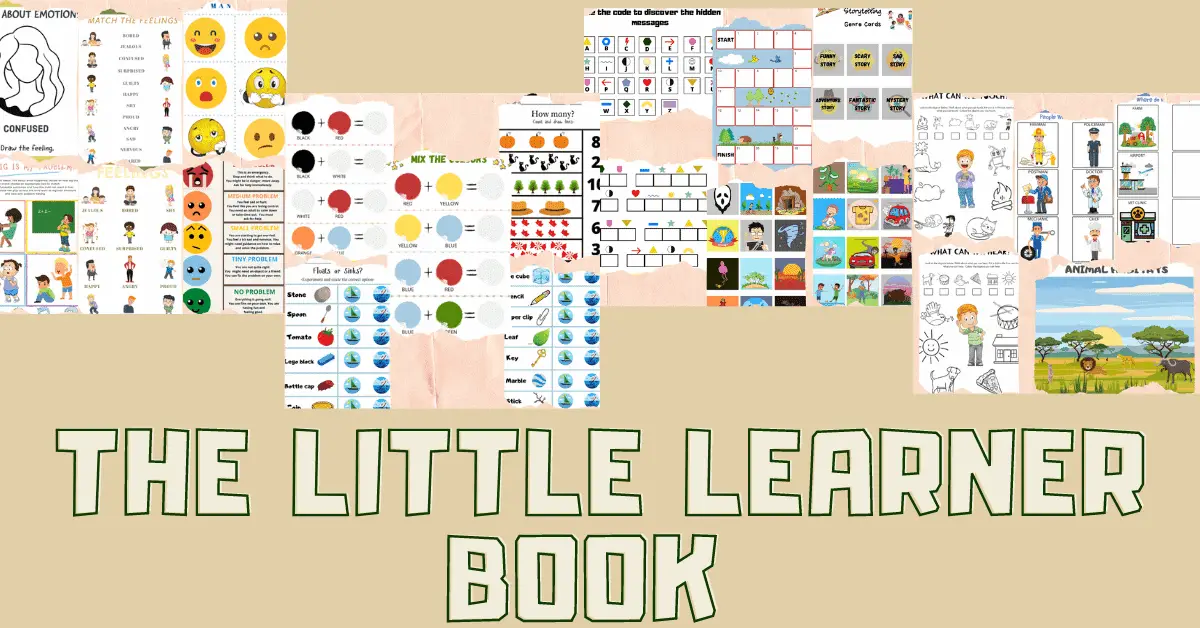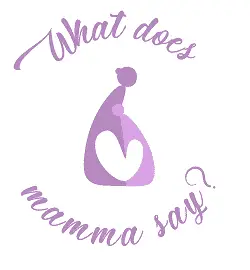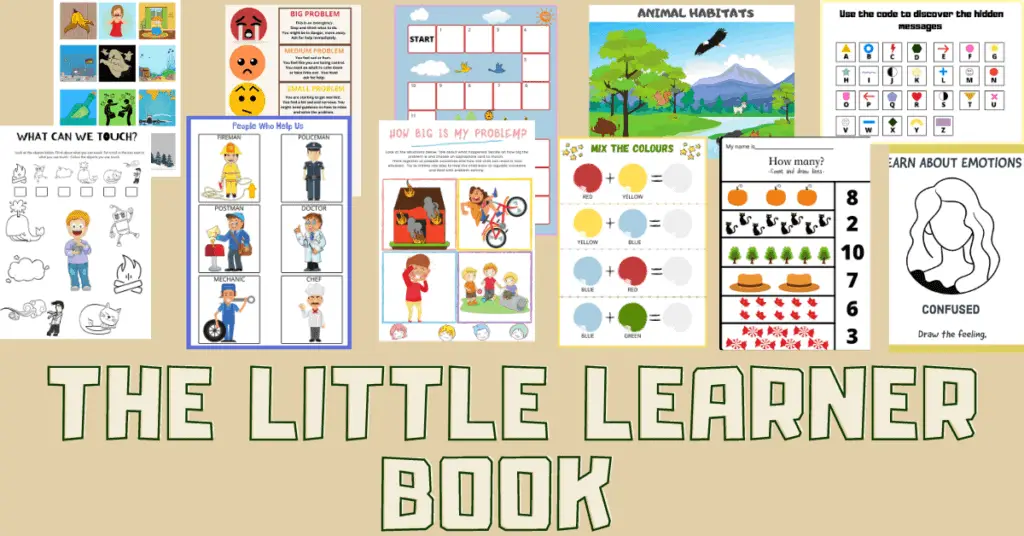The Book That Helps Little Learners Become Great Thinkers
Teaching kids involves so much dedication and passion, but also so much work. We know that parents are teachers and we are parent-teachers as well. That is why we designed the little learner book, to encourage and lend a helping hand to all parents out there, involved in homeschooling, and not only. This little book was created because we know ALL parents are teachers. This is our gift to them.
The Little Learner Book includes 53 worksheets and a total of 13 activities designed to meet 4 of the 7 early years foundation stage areas, namely: understanding the world, social and emotional development, math/stem, and language development.
Try our free samples below and convince yourself that they are the best option for your little learner. You can instantly download these free samples from the form below. The free worksheets below include a sample from each of the 4 areas of development mentioned above.
Understanding the World Activities
The Five Senses Worksheets
To help children understand the five senses, the little book includes 5 worksheets, one for each of the senses. Your little one will have to identify the sense by looking at the large colourful picture in the middle. The next step is to colour all those objects that reflect the respective sense: colour all objects we can smell, all objects we can taste etc.
The last step is to tick the boxes for all those object coloured, as a short and quick revision of each sense. My son loved this activity as we liked to joke about the absurd combinations: taste the teddy, hear the sun, touch the clouds etc

People Who Help Us Worksheets
There are 12 mini flashcards in this book of various jobs that you can initially use to teach your little learner about what jobs people have. They are child-friendly as they are colourful, small and easy to manipulate if you laminate them. As a further activity, the worksheets also require little ones to match the jobs with the places, thus teaching them more about where people work and even special uniforms.
I taught my little one what people do in those buildings, what they wear and how they might feel. We even acted out situations in which my son dressed up as a fireman, policeman and doctor and I pretended to need his help. It was amazing how much empathy this kind of activity can bring out.

Animal Habitat Worksheets
I designed these two worksheets because I know how much all children love animals. There are two habitats: the mountains and the savannah. In each of the habitats, there are animals and natural elements to help you teach your little learner. You can teach kids about various animals in the world, where they live, and how that habitat might look like.
These worksheets are fun and interactive as you need to cut out various elements and glue them where indicated to create lift the flap worksheets. I laminated the worksheets and used velco dots to attach the elements on the page. My toddler loves to lift the flap, but only after guessing what might be hiding under there. So these worksheets can also become a memory game activity as kids need to remember what is hidden under each picture.

The Little Learner Book is available now on our ETSY SHOP at a promotional price. Get it now!
Social-Emotional Development Activities
How Big Is My Problem Worksheets
This is a wonderful activity for little learners to learn about managing emotions and dealing with problems. I learned about it from my husband who works with children with autism. It is a well-known activity among practitioners and I want to share it with you.
First, there is an incremental ladder of situations. It starts with a big problem/emergency and a red face. Children are taught about what might represent an emergency, what to do and how we feel. The situations lower to medium problem, small problem, tiny problem, and no problem. Each situation has a corresponding face, colour-coded.

For each situation, you must take your time to talk to your little one about what they represent, give examples, talk about how we feel, what we might do. Only then you can proceed to the actual situations given on the worksheets. Discuss each situation, decide what kind of a problem it is and match the corresponding face. It is a complex activity, but with such wonderful results.
From time to time, I do it with my son and it seems new every time. This might mean that my 3-year-old finds it too difficult. That is why I let him guide me, offering him as much time as he wants and i simply answer his questions about the situations. That is all we do for now. With older children, you might go through all the processes described above. This activity is absolutely brilliant and I am very happy to offer it to you!
Draw the Feeling Worksheets
This little learner book offers 6 worksheets that require children to draw faces to express the feelings given. It is a very challenging activity for children as it requires a complex process. First, little ones must mentally create the image of the feeling. Then, they must represent it two-dimensionally whereas their minds will imagine a real-life image.
I was surprised to see that my toddler managed to draw the eyes, nose and a mouth in the correct places, correctly distanced, but could not portray the feeling. I am sure that older children would excel at this activity, while at the same time having a blast. I suggest laminating the worksheets so your little one can use them again and again.

Match the Feelings Worksheets
This activity is addressed to slightly older little learners as it involves written words. The first worksheet presents the vocabulary in labelled pictures. The second worksheet encourages children to associate the written word and the pictures and draw lines to match them.
I was able to do this with my little one because I pointed to the initial letter of each word and he retrieved the word from memory. He is three years old and can identify all the letters of the alphabet, but I don’t want to force him to remember the whole word. Perhaps your method is different, so always try your way as you know your child best.

Match Pictures and Words Worksheets
To help little ones learn emotions more easily, I designed two worksheets that use emoticons to illustrate the feeling. Once you cut out the round shapes, play with them, and teach your child the vocabulary. For older children, use the written words worksheets, cut them out and have children match the pictures and the words.
We played only with the emoticons. I hid them around the room for my son to find. We also stuck them on the wall and had my son hit them with a small ball as in darts and we named the emotions. I put them in a hat and my son had to extract them one by one, naming the face. There are many games you can play, use your imagination, and most importantly, let your little one invent games with them!
Effective learning happens when the child enjoys the process. Get your little learner ready for school with Play and Learn-Interactive Book for Preschool (26 teacher-developed fun activities). Get it now!
Not sure what to do? Get a FREE SAMPLE containing 13 worksheets.
STEM Activities
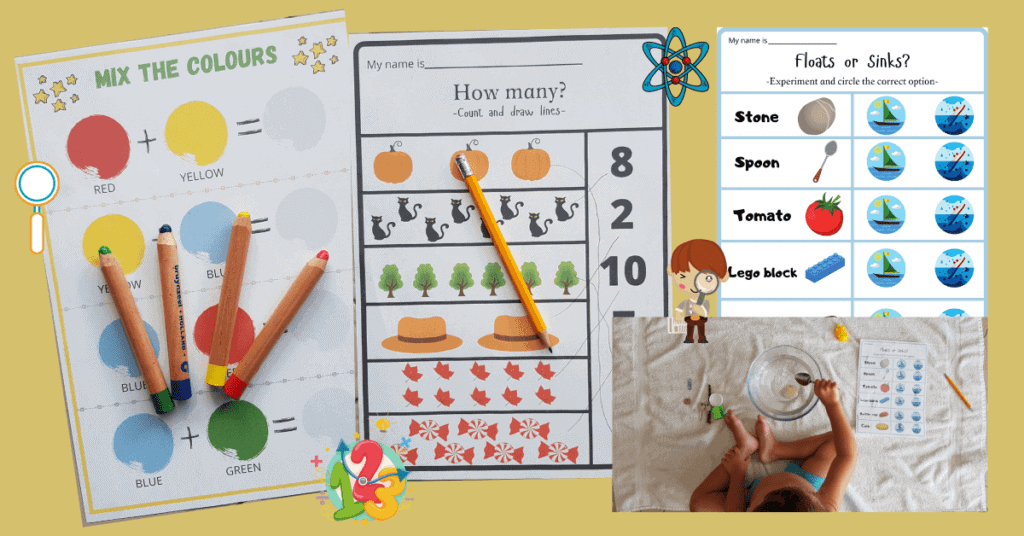
Mix the Colours
Colours are among the first things that children learn and with good reason since everything has a colour. Most children when they start colouring and painting discover something marvellous: when mixing certain colours, you get completely different ones, just like magic.
This is an extremely simple but fun activity for young children. Simply use the worksheet with the suggested colours and start experimenting. You can use either paints or coloured pencils, both work very well. My son wanted to use his new pencils so we went with that. It was great seeing the surprise on his face when he saw the result and the new colour.
How many-count and draw lines
A simple, yet engaging Math activity that will help your little learner practise numbers from 1 to 10.
When I did this activity with my little learner, he was just beginning to recognize the numbers but it worked splendidly and most importantly he enjoyed it.
We started by naming the pictures in the left column (pumpkins, cats, trees, hats, leaves, candies) and then going over the numbers in the right column. This way I made sure that he could recognize them all. Then, we simply solved the exercise, counting the objects on the left and drawing a line to the corresponding number.
Floats or Sinks
This was definitely one of my sons favourite activity since he asked me to do it several times. Curiosity about the world around us is natural and often children find themselves experimenting and discovering without any intervention from adults. I’ve watched him playing with his toys at bath-time and noticed how he was figuring out which of his toys floated or sank.
Since he liked it so much, I figured we should experiment further and created this worksheet with various objects from around the house. Of course, these are just our suggestions and you can experiment with whatever you like.
Get your copy of The Little Learner Book now from our Etsy Shop!
Language and Communication
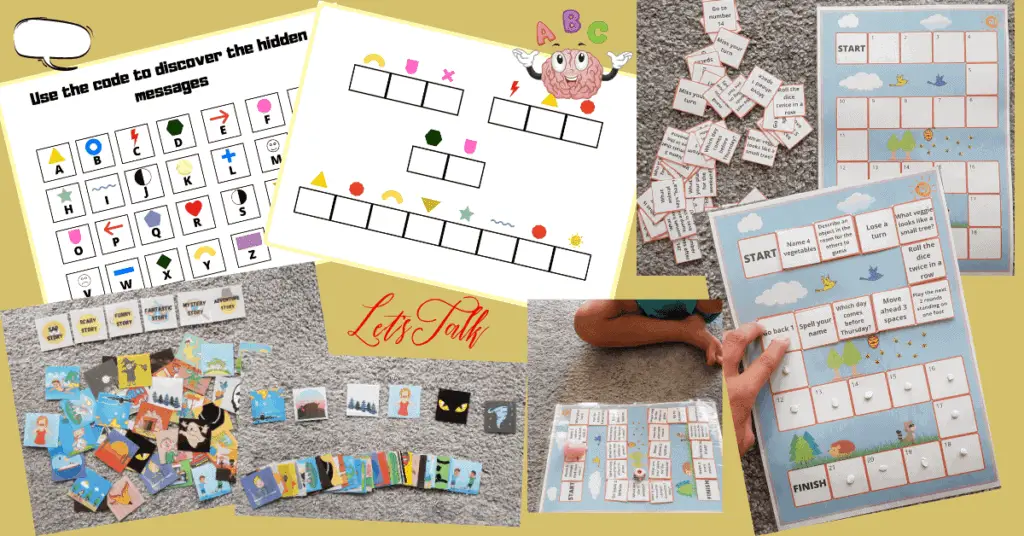
Decode the Messages
This is a great activity that I used with my students in various situations (introducing a new topic, discovering an answer, practising vocabulary, practising letters etc). And the reason why I used it so often is that it’s an insanely popular activity with kids. It has to do with the mystery, the excitement of discovery, and the reward of having cracked the code.
These particular worksheets are perfect for practising the letters while also refining their attention to details, so I would recommend it for kids who can recognize the alphabet letters well. They will discover 5 uplifting messages.
Create your board game
Kids love board games, and besides being fun, they can also be valuable teaching tools. In this case, the board game has 2 aims: testing kids’ general knowledge through simple questions and dares and encouraging communication and collaboration by discussing and working together to make the board game.
The pack contains the board game itself with 21 blank squares, 35 cards with questions and 18 hazard cards.
There are endless possibilities on how to arrange the cards and the hazards on the board so the game will always be fresh and exciting.
Imaginative Storytelling
One of the best ways to improve vocabulary, communication skills and creativity is through making up stories. It’s something that comes naturally to most of us and in the children’s case, it has many benefits.
Imaginative Storytelling contains 6 genre cards and 50 cards with different pictures that can be mixed and matched to create the most awesome stories. There are multiple ways of playing and in the pack, you will find a document that describes 3 versions in which Imaginative Storytelling can be played.
This is a brilliant family game which will be enjoyed by kids (I would recommend at least 4-5 years) and adults alike.
Get your Little Learner Book Now
We trust parents with all our resources because we know that they will help little learners expand their learning, but also their creativity. We are teachers and we know that the whole child needs to be educated, the whole child. His curiosity, his feelings, his physical and emotional state are our main focus, and only then his academic development.
We address this in all of our articles and we try to do it with our worksheets too. Our little learner book is meant to guide children through a world of discovery, active participation, exploration, and hands-on learning. Let your little one start his journey!
We share all of our ideas on our Facebook group Learning Activities for Kids.
Learning activities for kids

Hi there! We are Cristina and Monica, moms, teachers and friends. Read more about us and our mission here.
